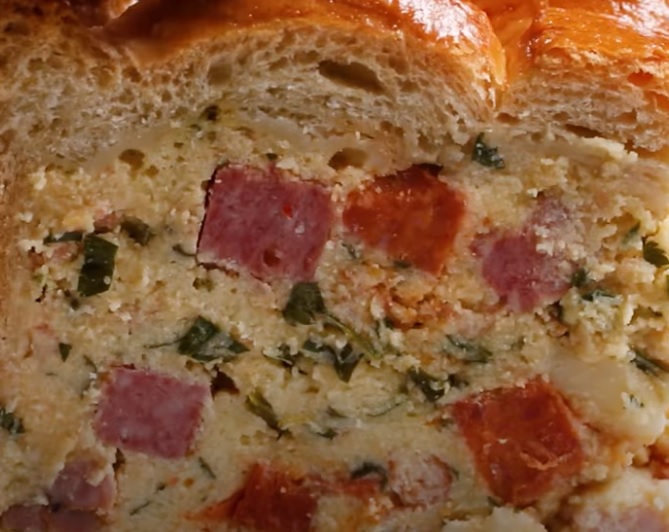
Last Updated on March 12, 2023 by Edible Alchemy Foods
Italian cuisine is renowned for its delectable dishes, and two of its most popular savory treats are pizza gain (also known as pizzagaina) and pizza rustica. While both dishes share similarities in terms of their use of dough and toppings, there are key differences that set them apart. In this article, we’ll explore the differences between pizza gain and pizza rustica, including their ingredients, preparation, and regional variations.
What is Pizza Gain (Pizzagaina)?
Pizza gain, also known as pizzagaina or pizza chiena, is a traditional Italian Easter pie that originates from the regions of Campania and Apulia. The dish is made with a rich and savory filling of meats, cheeses, eggs, and vegetables, all encased in a flaky and buttery crust. Pizza gain is often enjoyed during Easter celebrations, but it can be enjoyed throughout the year as a delicious and hearty meal.
What Are the Ingredients in Pizza Gain?
The ingredients used in pizza gain can vary depending on the region and the cook’s preferences, but the dish typically contains the following:
- Dough: Pizza gain is made with a rich and buttery dough that is similar to pie crust or shortcrust pastry.
- Meats: The filling of pizza gain typically includes a variety of meats, such as ham, salami, pepperoni, and sausage. Some recipes may also include prosciutto, pancetta, or other cured meats.
- Cheeses: Pizza gain is typically made with a blend of cheeses, including ricotta, mozzarella, and Parmesan.
- Eggs: Eggs are a key ingredient in pizza gain, providing richness and structure to the filling. Most recipes call for beaten eggs to be mixed in with the other filling ingredients.
- Vegetables: While not always included, some recipes for pizza gain may include vegetables such as spinach, artichokes, or roasted peppers.
What is Pizza Rustica?
Unlike the flatter surfaced pizza commonly made in homes and restaurants, Pizza Rustica resembles a pie that is filled with cheeses and meats, which may include ricotta, mozzarella, provolone, and Romano cheese combined with meats such as sausage, salami, and prosciutto, or perhaps mortadella and soppressata instead of the sausage and salami. This dish is commonly made during the Easter season and is a staple in Italian households. The filling is encased in a rich, flaky pastry crust that is similar to a quiche crust.
Origins of Pizza Rustica
The origins of Pizza Rustica can be traced back to the region of Southern Italy, particularly in the Naples area, where it is known as “Torta Pasqualina” [3]. It is believed that this dish was first made by Italian peasants who used their leftover ingredients from the Easter feast to create a savory pie. The pie was then taken to the fields by the farmers and consumed for lunch [1].
How to Make Pizza Rustica
Making Pizza Rustica can be a labor of love, but the results are well worth the effort. The first step is to prepare the crust, which is typically a pastry dough made from flour, butter, and egg yolks. Once the crust is prepared, it is filled with a combination of meats and cheeses, including ricotta, mozzarella, provolone, and Romano cheese, as well as meats such as prosciutto, pepperoni, soppressata, or salami. Some recipes also include spinach or other vegetables.
Once the filling is prepared, it is poured into the crust and baked until the crust is golden brown and the filling is set. Pizza Rustica can be served warm or cold and is perfect for a holiday feast or a picnic lunch.
Read:
- Sourdough Vs. Peasant Bread.
- Difference Between Tortiglioni And Rigatoni
- Baked Ziti vs. Baked Ziti Sicilian
Conclusion
So, what’s the difference between pizzagaina and pizza rustica? Pizzagaina is a traditional Neapolitan pizza with a soft, chewy crust, while pizza rustica is a rustic, home-style pizza with a crispy, flaky crust.









